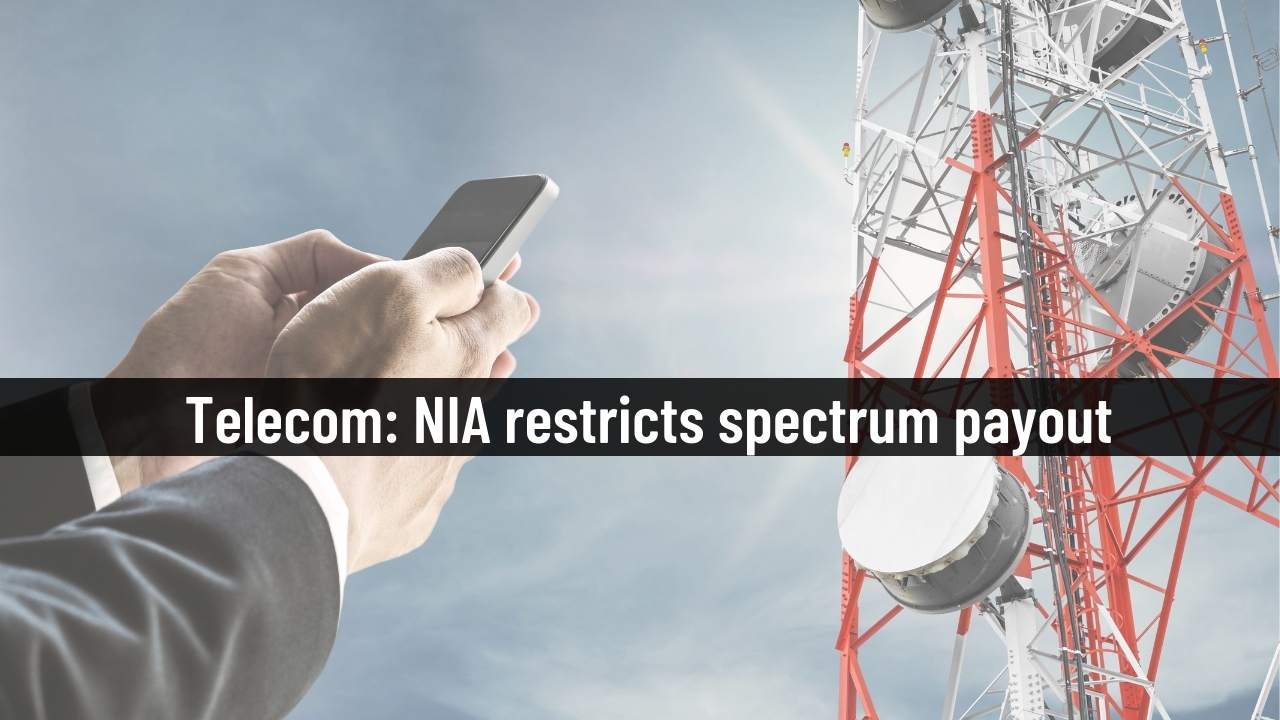Telecom: NIA restricts spectrum payout

Last Updated: 20th June 2022 - 04:25 pm
Department of Telecommunications (DoT) has released a notice inviting applications (NIA) for the auction of spectrum in 600, 700, 800, 900, 1800, 2100, 2300, 2500, 3300 MHz, and 26GHz bands. As per NIA, the upcoming spectrum auction will start on 26th July’22.
Other key dates are:
1) 8th July’22 – last date for submission of application (indicates potential participants for auction)
2) earnest money deposit on 20th July’22 which will indicate the maximum spectrum payout for each telecom.
Spectrum's final reserve prices for C-band (3300-3270MHz) are the same as recommended by TRAI at Rs.3.17 billion/MHz pan-India (Rs.317 billion for 100MHz); however, DoT has notified the that spectrum’s right-to-use duration will be unchanged at 20 years. Earlier, the government had hinted at increasing spectrum right-to-use duration to 30 years, and TRAI had recommended increasing reserve price by 1.5x in case of 30 years, which would have meant a 50% higher spectrum payout for telecoms. Thus, 20 years’ duration is positive for telecoms and significantly restricts the total spectrum payout. Final reserve prices for other critical bands – 1) 26GHz – Rs.69.9 million/MHz pan-India (Rs.35 billion for 500MHz); and 2) 700MHz – Rs.39.3 billion/MHz pan-India (Rs.196 billion for 5MHz).
Spectrum purchased in the upcoming auction will have two payment options - 1) full or part upfront payment of total bid amount within 10 days of auction completion. Part-payment should be made at least for two years’ installments or multiple complete years thereafter. The buyer will have the option to avail moratorium for the corresponding number of years of payment, and 2) payment in 20 yearly equal installments with the first installment due in 10 days of completion of the auction. The rate of interest in calculating the installment is fixed at 7.2%. Pre-payment of spectrum dues is allowed without any penalty.
This will significantly reduce the acquisition cost of fresh spectrum in an upcoming auction. Bharti Airtel, Vodafone Idea, and Reliance Jio paid spectrum usage charge (SUC) charges of 3.7%, 3.7%, and 3.6% of total AGR in Q4FY22, and if the telecoms buy C-band, and 26GHz, SUC should dip to a negligible amount. SUC is calculated based on the weightage of spectrum quantity, and the corresponding SUC %; spectrum quantity purchased in 3300MHz and 26GHz will be huge; it will attract zero SUC, thereby, bringing down the total SUC % to a fraction of the current number.
Telecoms are allowed to provide captive non-public networks, and enterprises are also allowed to directly obtain spectrum from DoT. NIA has allowed telecoms to provide a captive non-public network (CNPN) to an enterprise using its network resources (including the 5G spectrum). Enterprises can set up CNPN to establish their own isolated network via two routes – 1) leasing spectrum from telecoms for which DoT will issue spectrum-leasing guidelines, and 2) obtaining spectrum directly from DoT. In this regard, DoT will undertake demand studies and thereafter seek TRAI recommendation for direct assignment of spectrum to such enterprises. Large enterprises establishing isolated networks (by obtaining spectrum directly) will accelerate ecosystem and use-cases for CNPN, and help telecoms develop new markets for medium-sized enterprises.
Key points – 1) telecoms are allowed to surrender spectrum that will be auctioned after a minimum period of 10 years from the date of acquisition. Spectrum bought in previous auctions cannot be surrendered; 2) telecoms need not pay any future installment post spectrum surrender; 3) pre-payment made towards the surrendered spectrum will not be refunded, and 4) telecoms will be barred from taking part in the auctions for the surrendered band in the particular circle for the next two years.
- Performance Analysis
- Nifty Predictions
- Market Trends
- Insights on Market
Trending on 5paisa
Market Outlook Related Articles
Disclaimer: Investment in securities market are subject to market risks, read all the related documents carefully before investing. For detailed disclaimer please Click here.
 5paisa Research Team
5paisa Research Team
 Sachin Gupta
Sachin Gupta




